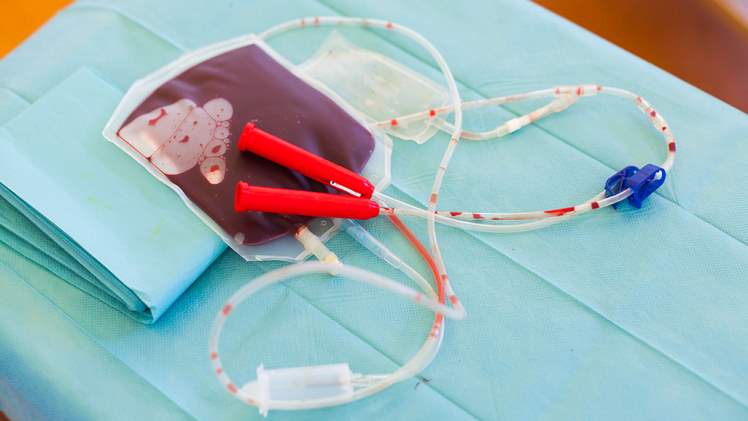How to Select the Best Cord Blood Banks

Storing your child’s cord blood is a great way to prepare for the future. Whether you plan to use it to treat your child or have another child in the future, storing your child’s cord blood can be extremely beneficial. To help you make an informed decision about where to store your child’s cord blood, we have compiled this list of questions that you should ask any potential cord blood banks before making your final decision.
Who owns and will store the cord blood?
Before you even think about cost, you should be sure that the company you choose will store the cord blood for you. This is the first, and most important, decision you will make because you will be stuck with it for the rest of your child’s life, or the rest of your life, depending on which person’s life is longer. While the majority of cord blood banks do store cord blood for their customers, it is important to check that this is the case with the bank you are considering. You will want to make sure that you will be able to access your child’s cord blood once he or she is older. Some banks use a “no-freeze” method to store cord blood. This can reduce costs and increase the number of clients that the bank can serve, but it also reduces the viability of the cord blood. If the bank you choose uses this method, it may be impossible to use the cord blood in the future.
What are the costs associated with storing your child’s cord blood?
The cost associated with storing your child’s cord blood is one of the most important questions to ask when choosing a cord blood bank. You want to make sure that you are paying a fair price for quality services and that you are not being charged an unnecessarily high price for storage. While the average cost of storing cord blood at a private bank is $2000 to $3000, it is possible to find cheaper options, even if you decide to store your child’s cord blood at a private bank. You may be able to save money by storing at a public bank or storing at home if you have the proper equipment. You should still expect to pay a fee, but it will likely be much less than the price charged by private banks.
What is included in the fee?
You should always check to see what is included in the fee. You don’t want to pay a fee and not receive the services that you expect. Some banks will store a certain amount of cord blood and also provide you with a few years of storage for free. This is a good deal, especially if you are not sure whether you will want to use the cord blood in the future. Some banks offer free storage for life, which is a great deal if you do plan on using the cord blood in the near future. You should also check to see whether or not the bank will send you a kit to collect the blood. This can add to the cost, but it may also increase the likelihood that you will actually store the blood.
Cord Blood Quality Standards
You should always make sure that the cord blood bank you choose meets all FDA quality standards. While FDA quality standards are not as rigorous as other standards, such as those set by the AABB or ASTM, it is still important to make sure that the cord blood bank you choose meets FDA standards. You should also make sure that the cord blood bank you choose is accredited. Accreditation is important because it helps to ensure that the cord blood bank is meeting industry standards. It also helps you to verify which banks are legitimate. You should always make sure that the accrediting body is a recognized organization.
Will you be storing stem cells and/or tissue?
Not all cord blood banks offer to store stem cells. If you are looking to store both stem cells and tissue, you may have to go with a public cord blood bank. You may also be able to find a private bank that offers this service, but it will likely cost you more. Storing tissue can be beneficial because it can be used to treat a larger number of diseases. It can also be used to treat a wider range of patients because it is a less specific procedure. Stem cells, on the other hand, are used to treat a smaller number of diseases and may only be able to be used to treat a single family member.
How will the stored cord blood be used?
You should also think about how the cord blood will be used. If you are storing both stem cells and tissue, you may be able to use the blood for either treatment. You may also be able to store the cord blood for more than one family member. It is important that you know all of these things before you start collecting the blood. If you don’t know what you will do with the blood, you should consider storing at a public bank. Public banks store the blood for anyone whose child has a disease that can be treated with stem cells. This can help to ensure that you have a source of treatment if you ever need it.
What happens if you don’t store your child’s cord blood?
You should always make sure that you have a plan for what you will do if you do not store your child’s cord blood. While you can always store at a public bank and use the blood if you need it, it is important that you have a backup plan. You can also store your child’s cord blood with a private bank and then donate it to a public bank when your child is older. This can be a great way to give back to the community and help someone else.
Is there a storage guarantee? Is there a time limit for using the stored cord blood?
Some banks may offer a guarantee that they will store your child’s cord blood for a certain amount of time. This can be a great way to ensure that your child has access to the stored blood if you need it in the future. You should check to see if the bank you are considering offers this service. You may also be able to store your child’s cord blood for an unlimited amount of time. This can be helpful if you are storing for a child who is very young and has not been diagnosed with a disease that can be treated with stem cells. Cord blood is viable for use for up to 10 years. Beyond this time frame, the blood may not be viable for use.
Why is there such a big price difference between banks?
As we mentioned above, there is a big difference in the cost associated with storing your child’s cord blood at a private bank versus a public bank. In fact, the cost may be several thousand dollars more at a private bank. There are a few different explanations for the difference in cost. The first is that the government regulates public banks but not private banks. This means that public banks have more strict standards they must adhere to.
Conclusion
Before you decide where to store your child’s cord blood, you should make sure that you understand what you will get out of the service. It is also important that you understand what you will not get out of cord blood storage. There are many options for storing your child’s cord blood, but here is our list of the best cord blood banks in the states to help you get started.



